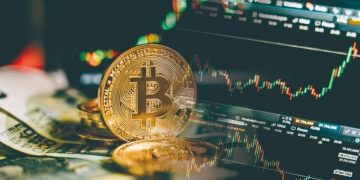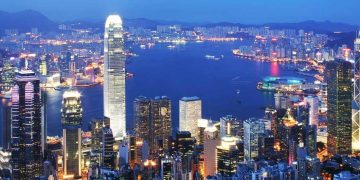Introduction
- Overview of the Global Climate Crisis
- Climate change has emerged as one of the most pressing global challenges, with potentially devastating consequences for ecosystems, economies, and societies. The physical impacts of climate change—such as rising temperatures, extreme weather events, sea-level rise, and disruptions to agricultural productivity—are already being felt across the globe.
- The global response to climate change is shaped by both environmental and economic considerations. As economies grow and evolve, they must balance short-term economic goals with long-term sustainability, adopting strategies that promote both economic growth and environmental preservation.
- The Role of the Largest Economies
- The world’s largest economies—such as the United States, China, Japan, Germany, and India—account for a significant portion of global emissions and economic output. These countries play a central role in shaping global climate policies, and their ability to adapt to the impacts of climate change and transition to sustainable growth models is critical for achieving global climate goals.
- This article will explore how these economies are addressing climate change, the challenges they face in transitioning to sustainable growth, and the potential solutions that could allow them to thrive while minimizing their environmental impact.
Section 1: Understanding the Link Between Economic Growth and Climate Change
- Economic Growth and Environmental Impact
- Historically, economic growth has been tied to increased resource consumption, carbon emissions, and environmental degradation. The industrial revolution, which spurred the growth of many of today’s largest economies, also set in motion the processes that contributed to climate change.
- The pursuit of economic development often leads to higher energy consumption, deforestation, increased waste, and pollution. This growth model, centered on resource exploitation and fossil fuel use, has proven unsustainable in the long run, as evidenced by the growing crisis of climate change.
- The Challenge of Decoupling Growth from Environmental Harm
- One of the major challenges for the world’s largest economies is finding ways to decouple economic growth from environmental degradation. This means achieving sustained economic growth without further accelerating climate change or exhausting the planet’s natural resources.
- Technological innovation, efficiency improvements, and new economic models such as the circular economy are part of the potential solutions to this challenge.
Section 2: Case Studies of the Largest Economies’ Responses to Climate Change
2.1 United States
- Climate Change Policy and Economic Impact
- The U.S. is the second-largest emitter of greenhouse gases globally, making its policies and actions essential to global efforts to address climate change. The shift from the Trump administration’s climate skepticism to the Biden administration’s emphasis on climate action marks a critical turning point.
- The U.S. has rejoined the Paris Agreement and set ambitious climate goals, including achieving net-zero emissions by 2050 and reducing emissions by 50-52% by 2030 (compared to 2005 levels).
- Challenges and Opportunities
- The U.S. economy is heavily dependent on fossil fuels, and transitioning to clean energy poses significant challenges, particularly in regions that rely on coal, oil, and gas industries for employment.
- The green energy revolution, however, offers opportunities for innovation, job creation, and leadership in industries such as electric vehicles, solar power, and wind energy.
2.2 China
- China’s Role in Global Climate Efforts
- As the world’s largest emitter of carbon dioxide, China’s climate policies are crucial in the global fight against climate change. However, China is also the world’s largest producer of solar panels, wind turbines, and electric vehicles, positioning itself as a leader in clean energy technology.
- In 2020, China committed to achieving carbon neutrality by 2060 and peaking emissions before 2030. This goal will require significant investments in clean energy and infrastructure.
- Challenges and Trade-offs
- China’s rapid industrialization has led to high levels of pollution, and its economy is still heavily reliant on coal for energy. The transition to renewable energy is crucial, but it must also address the needs of millions of people who depend on traditional industries for employment.
2.3 European Union
- The European Green Deal
- The EU has positioned itself as a global leader in the fight against climate change. The European Green Deal, announced in 2019, sets the goal of making Europe the first climate-neutral continent by 2050.
- The EU’s climate strategy includes ambitious measures to reduce emissions, promote renewable energy, and support green innovation. The EU’s carbon pricing system, which places a price on carbon emissions, is one of the cornerstones of its climate policy.
- Economic and Social Implications
- The EU’s focus on green growth comes with challenges, particularly for industries that rely heavily on carbon-intensive processes. However, the EU also emphasizes just transition strategies to ensure that regions and workers affected by the transition to a green economy are supported.
2.4 India
- India’s Growing Emissions and Sustainable Development Goals
- India is the world’s third-largest emitter of carbon dioxide, yet it faces a unique challenge due to its growing population and development needs. The country’s per capita emissions are still much lower than those of developed countries, but its rapid economic growth and urbanization are contributing to rising emissions.
- India has committed to reducing its carbon intensity (emissions per unit of GDP) by 33-35% by 2030 compared to 2005 levels and increasing the share of non-fossil fuels in its energy mix to 50%.
- Balancing Growth and Sustainability
- India’s development goals are focused on lifting millions of people out of poverty, which requires access to energy, infrastructure, and industry. The challenge for India lies in achieving this economic growth while reducing emissions and mitigating the impacts of climate change.

Section 3: Global Strategies for Achieving Sustainable Growth
3.1 Renewable Energy Transition
- Energy Systems of the Future
- Transitioning from fossil fuels to renewable energy is central to any global strategy for mitigating climate change. The world’s largest economies are increasingly investing in renewable energy sources such as solar, wind, and hydropower.
- Innovations in energy storage, smart grids, and energy efficiency are essential for addressing the intermittent nature of renewable energy sources and ensuring a reliable energy supply.
3.2 Green Technology and Innovation
- Technological Solutions for Sustainable Growth
- Advances in green technology offer significant potential for reducing emissions while maintaining economic growth. Electric vehicles (EVs), carbon capture and storage (CCS), sustainable agriculture, and green building technologies are among the many innovations that can help reduce environmental impact.
- The private sector plays a crucial role in driving innovation, with companies increasingly investing in sustainability as a way to both mitigate risk and capitalize on emerging market opportunities.
3.3 Carbon Pricing and Market-based Solutions
- Carbon Pricing Mechanisms
- Carbon pricing, through mechanisms such as carbon taxes or cap-and-trade systems, provides economic incentives for businesses to reduce their emissions. The EU’s carbon trading system is a prime example of how market forces can be harnessed to encourage emissions reductions.
- By incorporating the environmental cost of carbon into economic decision-making, carbon pricing helps shift investments toward cleaner, more sustainable practices.
3.4 Circular Economy and Sustainable Consumption
- Redefining Growth
- The circular economy model aims to eliminate waste and make the most of available resources by promoting recycling, reusing, and remanufacturing. This contrasts with the traditional linear economy, where products are made, used, and discarded.
- The circular economy offers an alternative pathway to sustainable growth by reducing reliance on finite resources and minimizing waste and pollution.
Section 4: Addressing Global Inequalities in Climate Change Adaptation
- The Role of Developed vs. Developing Nations
- The world’s largest economies bear the largest responsibility for historical emissions and must lead efforts to address climate change. However, developing nations also face pressing challenges related to climate change, including the need for adaptation and resilience-building.
- The principle of climate justice advocates that wealthier nations should support developing nations in mitigating and adapting to climate change by providing financial resources, technology transfer, and capacity-building support.
- International Cooperation and Climate Finance
- Global cooperation is essential for addressing climate change, as it is a transnational issue that cannot be solved by any single country or region. International agreements such as the Paris Agreement aim to align global climate goals and encourage countries to set nationally determined contributions (NDCs) to reduce emissions.
- Climate finance is a key mechanism to support developing countries in their transition to low-carbon economies and their efforts to adapt to climate impacts.
Section 5: The Long-Term Outlook for Global Economic Sustainability
- Adapting to the New Normal
- Climate change is already reshaping global economies, and the world’s largest economies must adapt to a “new normal” of environmental risks, resource scarcity, and economic instability. This includes rethinking growth models, investing in resilience, and prioritizing sustainability across all sectors.
- Opportunities for Innovation and Green Growth
- While the challenges are significant, the transition to a green economy also presents opportunities for growth and innovation. Green technologies, sustainable industries, and the circular economy offer new avenues for economic development, job creation, and environmental protection.
Conclusion
- Key Takeaways
- The world’s largest economies have a critical role to play in addressing climate change and transitioning to sustainable growth. While the path to sustainability presents significant challenges, it also offers numerous opportunities for innovation, economic transformation, and global cooperation.
- The Future of Global Sustainability
- The next few decades will be crucial in determining whether the world’s largest economies can successfully adapt to climate change and pursue sustainable growth. With the right policies, investments, and global cooperation, it is possible to build a future that balances economic prosperity with environmental stewardship.


































